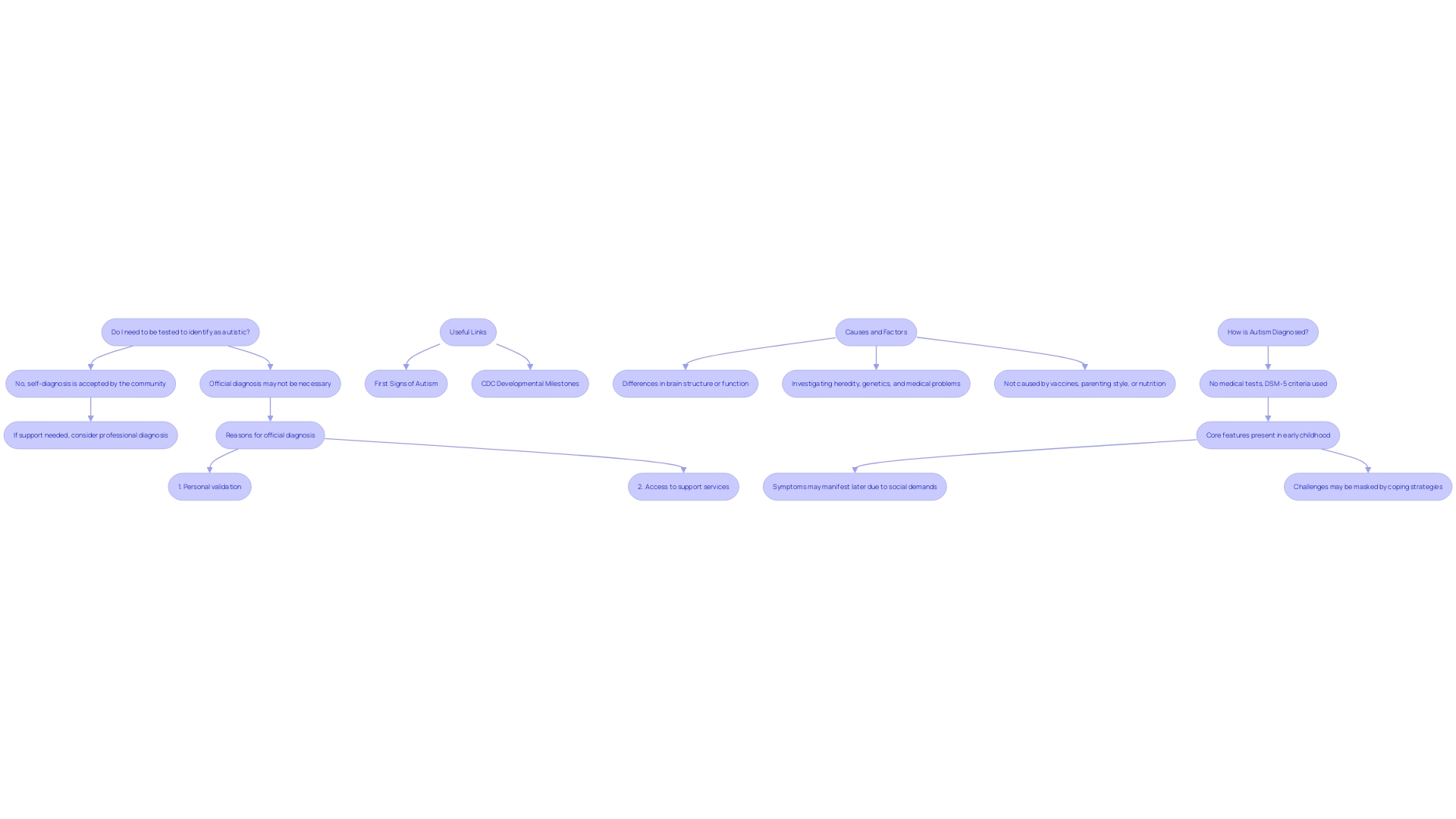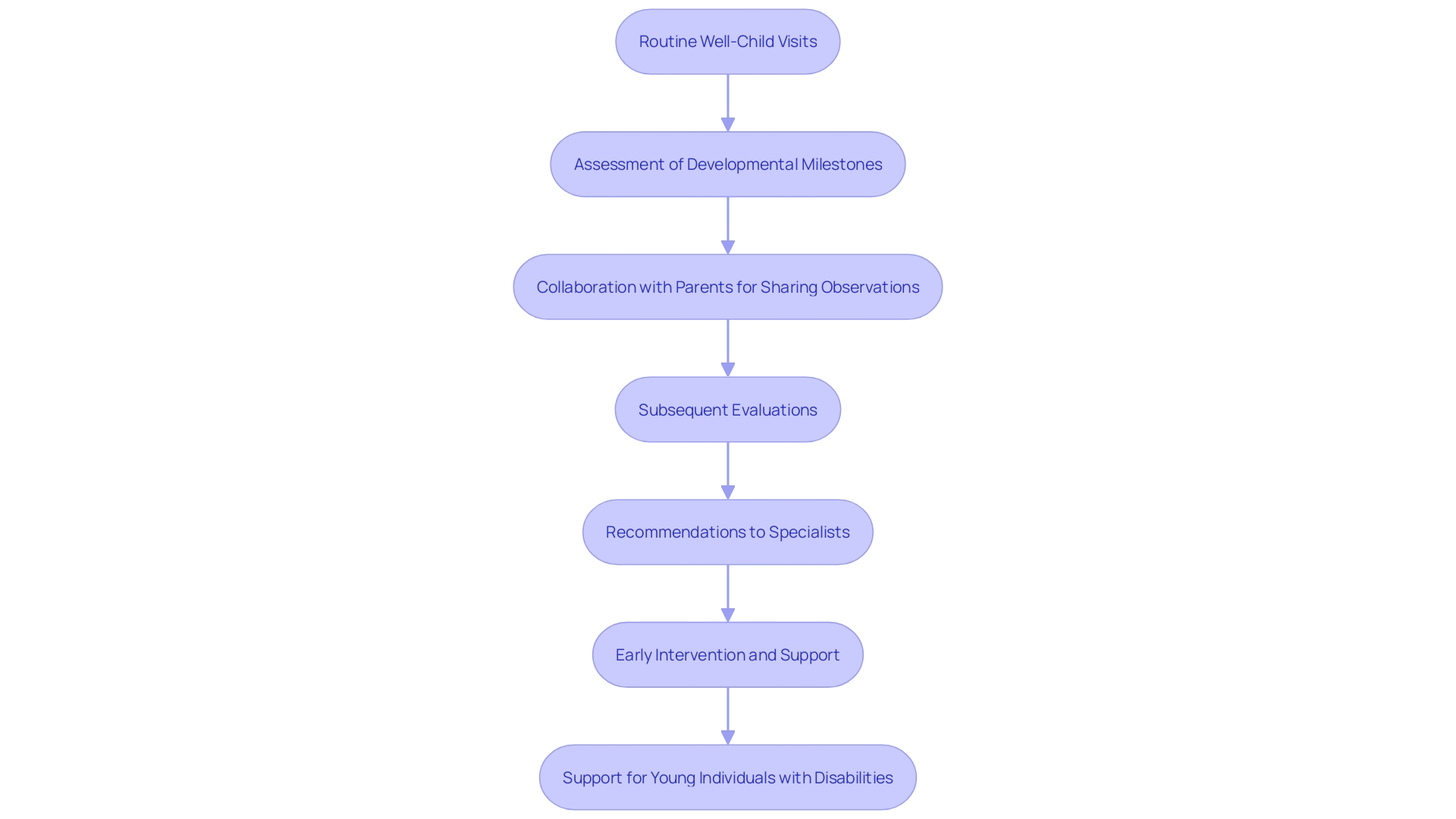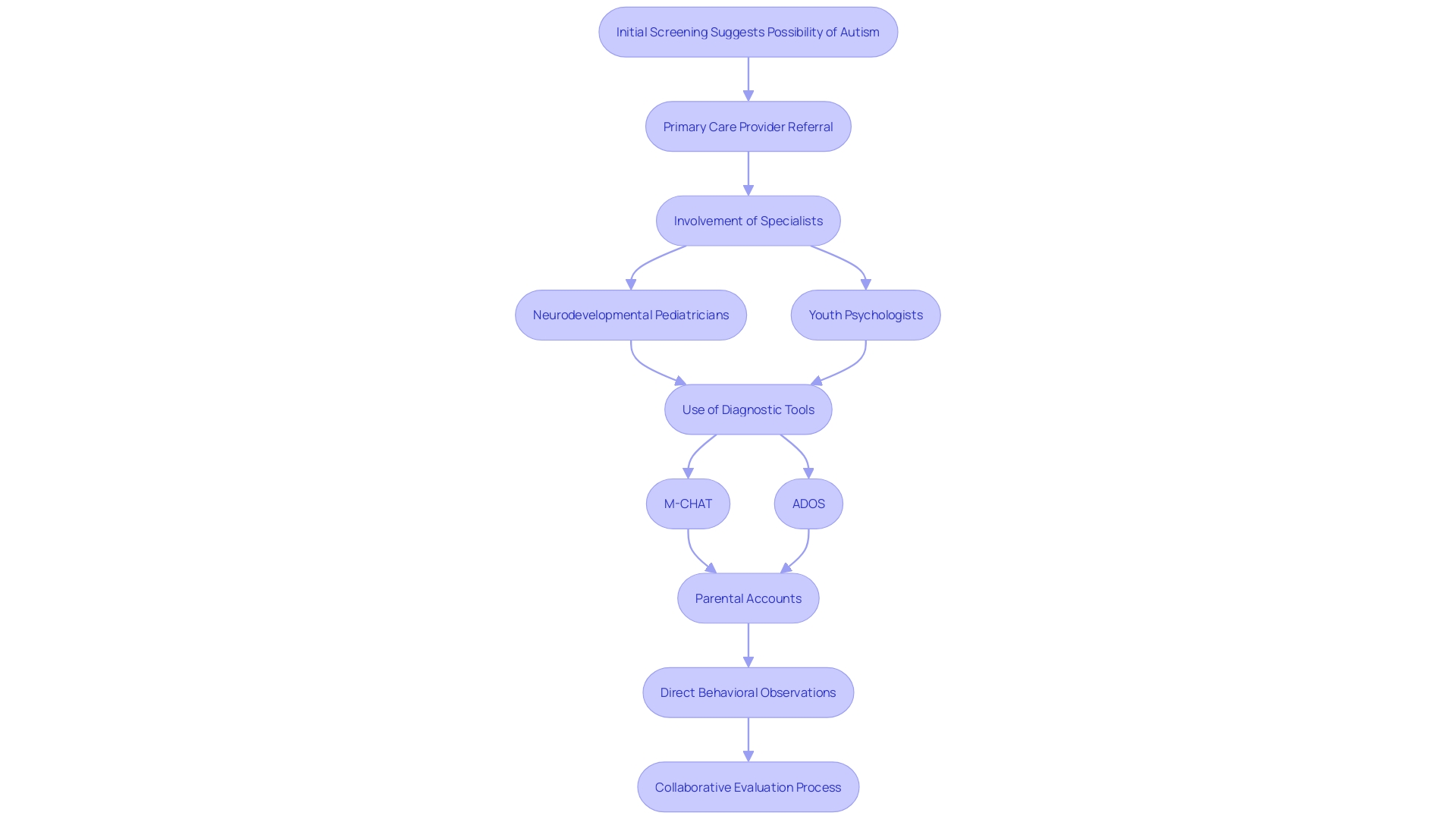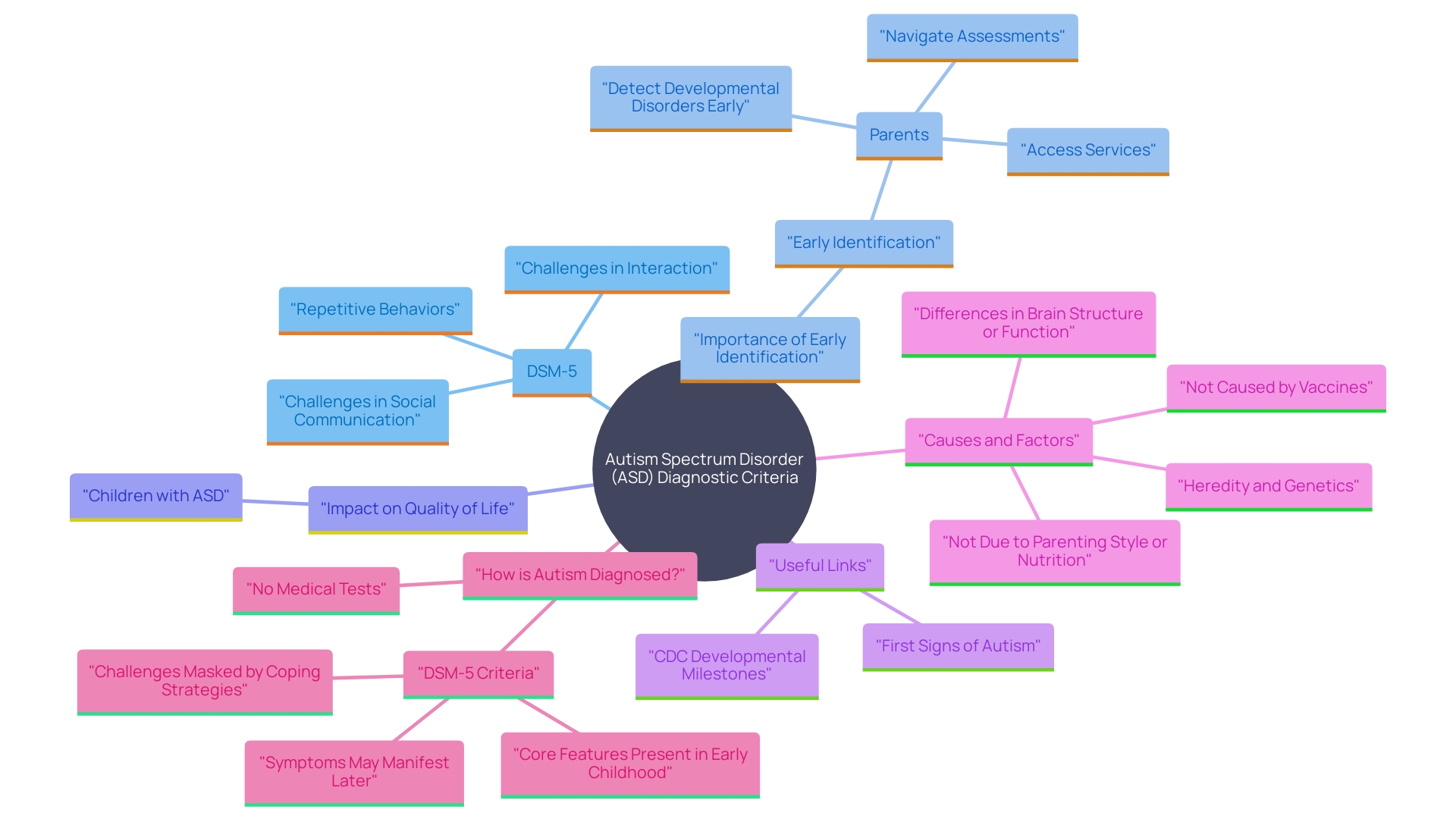Introduction
Early diagnosis of autism is pivotal for securing effective intervention and support. Identifying autism spectrum disorder (ASD) at a young age allows parents and caregivers to tap into resources and therapies that can substantially enhance developmental outcomes. The formative years, especially from birth to age five, are critical as ninety percent of brain development occurs during this period, making early intervention crucial.
This period is marked by the brain’s peak neuroplasticity, which means it's highly capable of forming and reforming neural pathways.
Early intervention can significantly improve a child's social skills, communication abilities, and academic success. It also aligns with the broader goal of ensuring equity for children with disabilities, as highlighted by Dr. David (Dan) R. Offord, who emphasized the importance of making the race fair for all children, including those with disabilities. Recognizing both their unmet needs and the assets they bring to their communities is essential in reducing chronic sources of stress and ensuring that caregivers have the resources they need.
Understanding the signs of autism and seeking evaluation promptly can empower families to act swiftly, thus providing a fairer start for their children. Engaged, peaceful, and well-supported participation of children with disabilities in various aspects of their lives is fundamental to their mental health and overall well-being. This approach not only fosters resilience but also promotes positive long-term health outcomes for children.
The Importance of Early Diagnosis
Timely identification of the condition is crucial for obtaining effective intervention and support. Identifying autism spectrum disorder (ASD) at a young age allows parents and caregivers to tap into resources and therapies that can substantially enhance developmental outcomes. The formative years, especially from birth to age five, are critical as ninety percent of brain development occurs during this period, making early intervention crucial. This period is marked by the brain’s peak neuroplasticity, which means it's highly capable of forming and reforming neural pathways.
Early intervention can significantly enhance a young person's social skills, communication abilities, and academic success. It also corresponds with the wider aim of guaranteeing fairness for youngsters with disabilities, as pointed out by Dr. David (Dan) R. Offord, who stressed the significance of making the competition equitable for all youngsters, including those with disabilities. Recognizing both their unmet needs and the assets they bring to their communities is essential in reducing chronic sources of stress and ensuring that caregivers have the resources they need.
Grasping the indicators of autism and pursuing assessment quickly can enable families to respond rapidly, thereby offering a more equitable beginning for their offspring. Engaged, peaceful, and well-supported involvement of young individuals with disabilities in various aspects of their lives is fundamental to their mental health and overall well-being. This approach not only fosters resilience but also promotes positive long-term health outcomes for young individuals.
The Two-Stage Diagnosis Process
Autism diagnosis is a multi-step process that begins with screening and is followed by a comprehensive evaluation. This structured approach ensures that young individuals receive detailed evaluations tailored to their specific needs. The initial screening phase aims to identify any potential concerns early on. Once potential concerns are flagged, a comprehensive evaluation delves deeper into the individual's behavior and developmental history, providing a nuanced understanding of their condition. This thorough approach is crucial for identifying the unique challenges and strengths of each individual, ensuring they receive the appropriate support and resources for their development. As Dr. David (Dan) R. Offord aptly put it, making the 'race fair' for youngsters with disabilities is essential for their mental health and overall well-being. Timely and precise identification is crucial in this endeavor, allowing caregivers to create a nurturing atmosphere that responds to both the unfulfilled requirements and natural abilities of individuals on the spectrum.

Stage 1: Screening and Initial Assessment
Screening for autism typically starts during routine well-child visits, where healthcare providers assess developmental milestones. Pediatrician Dr. Leesa Li-Fossum emphasizes the significance of these early assessments, pointing out that prevention is the best remedy for enhancing the health of young individuals. Parents play an invaluable role by sharing detailed observations about their offspring's behavior and social interactions. This collaborative method guarantees that any issues brought up can result in additional evaluations and prompt recommendations to experts, making certain that young individuals obtain the assistance they require. As Dr. David Offord emphasized, ensuring fair participation and support for all young individuals, including those with disabilities, is vital for their mental well-being and overall growth.

Stage 2: Comprehensive Diagnostic Evaluation
Once screening suggests the possibility of autism, a thorough diagnostic evaluation is carried out. This involves a team of specialists, including neurodevelopmental pediatricians and youth psychologists, who leverage a variety of diagnostic tools and standardized criteria, such as the DSM-5. The evaluation process generally depends on two primary sources of information: detailed accounts from parents or caregivers and direct observations of the young one's behavior. Tools like the M-CHAT and ADOS are commonly used, but no single tool should be the sole basis for diagnosis. In certain cases, primary care providers might direct families to experts for additional evaluation, facilitating a thorough comprehension of the young person's developmental profile.

Diagnostic Criteria for Autism Spectrum Disorder (ASD)
The DSM-5 provides clear diagnostic criteria for Autism Spectrum Disorder (ASD), emphasizing ongoing challenges in social communication and interaction, as well as repetitive and restricted behaviors. 'Understanding these criteria is essential for parents, as it allows them to detect potential indicators of developmental disorders in their offspring early on, ensuring they receive the required assistance and interventions swiftly.'. The Interagency Autism Coordinating Committee (IACC) emphasizes the significance of early identification and intervention, highlighting the necessity for a unified strategy regarding research and services related to developmental disorders. By grasping these standards, parents can more effectively maneuver through the intricacies of developmental assessments and obtain vital services that can greatly enhance their offspring's quality of life.

Additional Considerations in Diagnosis
'Genetic testing can play a crucial role in identifying autism, helping to rule out other conditions that may present similar symptoms.'. For instance, de novo micro deletions such as those in the PAPOLG and REL genes have been linked to intellectual disabilities, highlighting the importance of comprehensive genetic evaluations. Sensory issues and comorbidities, which can significantly influence a young person's behavior and development, must also be thoroughly assessed. A holistic approach that considers all aspects of a child's health ensures an accurate diagnosis and tailored support. This aligns with the recommendations of the Interagency Autism Coordinating Committee (IACC), which emphasizes the need for coordinated efforts in autism research and services.
Conclusion
Early diagnosis of autism is vital for ensuring that children receive the interventions and resources necessary to thrive. By identifying autism spectrum disorder (ASD) during the crucial early years, families can access therapies that significantly enhance developmental outcomes. This early stage is marked by rapid brain development, making timely intervention essential for improving social skills, communication, and overall academic success.
Recognizing the unique strengths and needs of children with ASD not only fosters resilience but also promotes equity within the community, ensuring that all children have a fair opportunity to succeed.
The two-stage diagnosis process, which includes screening and comprehensive evaluations, ensures that children receive tailored assessments suited to their specific needs. This structured approach allows for a deeper understanding of each child's challenges and strengths, enabling families to provide a supportive environment that addresses their unique circumstances. Input from parents during screening plays a crucial role, as their observations can lead to timely referrals and necessary interventions.
Understanding the diagnostic criteria for autism, as outlined in the DSM-5, empowers parents to recognize potential signs early. This knowledge facilitates prompt access to support and services that can dramatically improve a child's quality of life. Additionally, considering genetic testing and assessing sensory issues and comorbidities is essential for a holistic understanding of a child's health.
By adopting a comprehensive approach to diagnosis and intervention, families can ensure their children receive the best possible support throughout their developmental journey.




